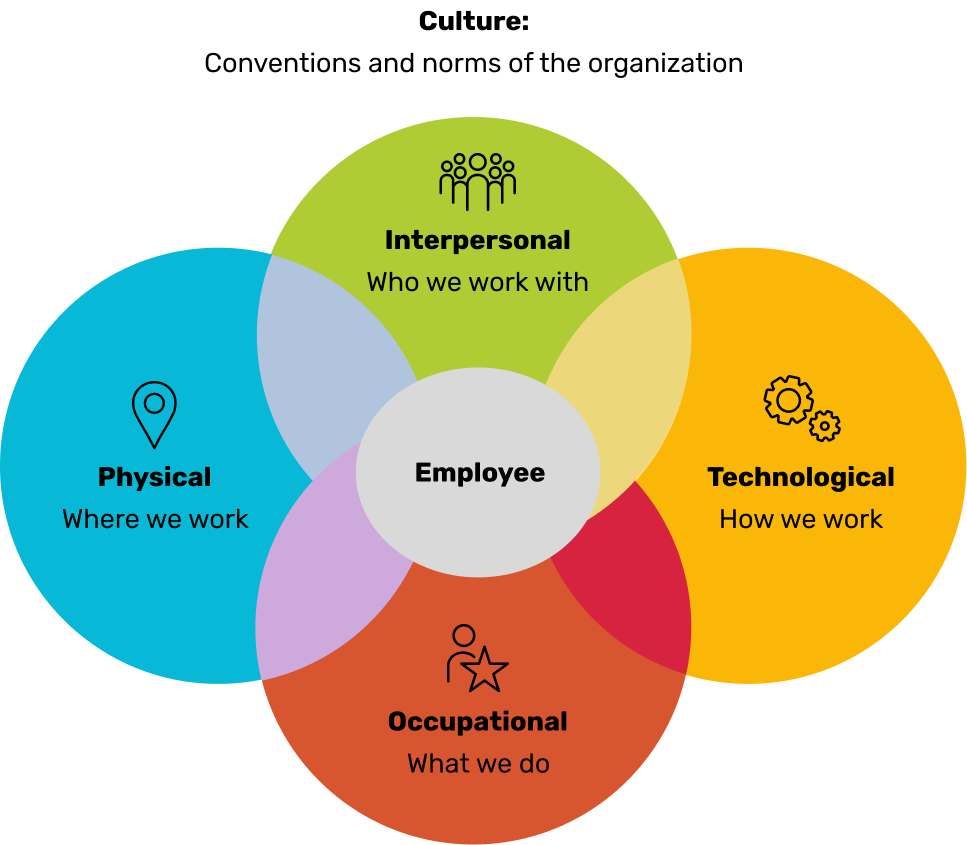Report
A new prescription for healthcare provider organizations to improve patient experiences: Prioritize the healthcare worker experience

Excellent patient experiences start—and endure—with strong healthcare employee experiences. Healthcare provider organizations have continued to hyper-focus on patients, but new survey data from Eagle Hill Consulting shows the downside of this approach. By a margin of three and a half to one, healthcare workers surveyed say their organization weighed customer experience as more important than employee experience to deliver the organizational mission, and nearly one in five say their organization places little or no importance on employee experience/satisfaction.
Our survey reveals clear and necessary action healthcare organizations can take: Prioritize the employee experience so healthcare workers can continue to prioritize patient satisfaction.
Eagle Hill’s own research fielded throughout the COVID-19 pandemic revealed persistent burnout among U.S. employees, with a rise in those who say they are burnt out from 45% in the early days of the pandemic to 53% last month.
This threatens to become an even bigger crisis for the healthcare industry, and provider organizations specifically, where nurses—who take on the greatest share of the patient care burden—are already leaving their jobs because an existing shortage of available nurses is leading to heavy workloads, insufficient resourcing, stress and burnout.
Our survey of more than 500 U.S. employees in the healthcare industry finds that over a quarter of healthcare workers plan to seek work with a new employer in the next 12 months. Other research shows that a reported three in ten employees in provider organizations are considering leaving not just their current positions but the profession.
A heavy patient-centered focus not counter-balanced by a focus on the employee experience of the healthcare providers who serve them can lead to morale issues that could become pervasive across the organization and ultimately exacerbate the already significant issues of burnout and attrition.
What can provider organizations do in the face of these concerning dynamics? Eagle Hill’s survey reveals clear and necessary action healthcare organizations can take: prioritize healthcare worker satisfaction so employees of provider organizations can continue to prioritize patient satisfaction.
28% of healthcare workers plan to seek work with a new employer in the next 12 months.
Source: Eagle Hill Consulting
Figure 1: Healthcare workers see vast disparity in how their organizations prioritize customer experience and employee experience
Source: Eagle Hill Consulting Employee Experience Survey 2021
A patient-centric focus alone will not move the patient experience needle very far
If provider organizations are going to continue to be patient-focused, they will require a workforce that is willing to make that happen. But Eagle Hill’s study findings show that healthcare organizations are not, at this point, prioritizing the employee experience.
Organizations recognize the importance of the patient experience in the healthcare environment—and put much effort into trying to optimize it—but having that as a sole focus won’t move the needle very far.
As shown in Figure 1, while the majority of healthcare worker respondents feel their organization places a great deal of importance on customer experience/satisfaction, fewer than half say their organization places a great deal of importance on employee experience/satisfaction. By a margin of three and a half to one, healthcare workers surveyed say their organization weighed customer experience as more important than employee experience to deliver the organizational mission, and nearly one in five say their organization places little or no importance on employee experience/satisfaction.
Similarly, twice as many healthcare workers felt that their organization took greater action to improve patient satisfaction/experience (64%) as compared to employee satisfaction/experience (24%).
Technology frustrates, rather than supports, healthcare workers
To make the situation worse, a significant percentage of healthcare workers are frustrated with the technologies that are supposed to help them more effectively and easily do their job.
While 74% of healthcare workers say technology improves their ability to serve their customers, more than one third (37%) say technology frustrates them. Further, nearly one in five say technology actually makes it harder for them to do their work. This comes at a time when an increasing number of provider organizations are integrating multiple forms of communication through emerging connectivity solutions with the objective of driving better efficiency, patient experience and health outcomes. Hospitals are continuously incorporating ever-evolving technology into the daily routines of nurses and medical professionals with the hopes of transitioning away from old, standard operating procedures of manual filing, emailing and charting patient information.
While better training on workplace technology could make a difference, nearly one out of three (28%) healthcare respondents say they do not get the technology training they need to succeed, and this is only part of the problem.
In fact, in many provider organizations the most significant technology issues, particularly for nurses, occur because of a lack of integration. With several systems not talking to each other, there’s repetition in documentation and no streamlined change management and adoption process in place.
All of these factors underscore the seriousness of properly preparing and supporting healthcare workers to maintain excellent patient experiences. We see this finding as an opportunity for provider organizations to provide the right support to succeed.
Nearly one out of three healthcare respondents say they do not get the technology training they need to succeed in their jobs.
Source: Eagle Hill Consulting
Weakened team dynamics could affect ability to deliver for patients
Our survey found that 98% of healthcare respondents agree that they deliver quality outcomes. While they feel good about themselves as individual performers, they feel far less confident in their teammates’ abilities and performance. For example, in our survey, healthcare workers most frequently cite having to do the work of underperforming colleagues as their biggest source of frustration at work.
When asked to reflect on the factors they valued most at work, healthcare workers were much more likely to rank individualistic factors, such as purposeful work than they were to rank factors related to teamwork, such as collaboration and relationships with colleagues (Figure 2).
Figure 2: Healthcare workers appear to value individualistic factors more than team-based ones at work
Which factors do you value the most in terms of your day-to-day work experience?
Respondents ranked the factors from 1 to 9 with 1 being the most valuable.
Source: Eagle Hill Consulting Employee Experience Survey 2021
The weaker team dynamics shown in these findings hint at a much larger issue: excellent patient experiences depend on cohesive and coordinated care teams. Department colleagues and customers, who have the highest impact on healthcare workers day-to-day work experience could also have a positive effect on worker morale. This is particularly important for Centennial employees in healthcare, with nearly half reporting feeling disconnected from their colleagues.
This situation cannot change soon enough. The need to deliberately focus on employee experiences—and create an optimal employee experience environment to provide better patient experiences—cannot be overstated.
Nearly half of Centennials, or Generation Z, (46%) disagreed with the statement “I feel connected to my colleagues.”
Source: Eagle Hill Consulting Healthcare Employee Experience Survey 2021
Recommendations for healthcare employee experience and patient experience success
Under the significant myriad pressures hospital staff are currently experiencing, the inefficiencies of routine hospital operations are being amplified. Adding a focus on the employee experience may seem difficult considering these other priorities, however studies across service industries clearly show the benefits of focusing on the employee experience.
Simply put, if you do the right thing for your employees, they’ll do the right thing for patients. Inversely, a lack of appreciation will worsen the situation, from safety on down the line.
If healthcare organizations do not address the gap in employee experience in their own workplaces, and allow this mix of toxic trends to continue, it will ultimately negatively impact attrition, patient health outcomes, health inequities in the workplace and delivery of care.
Here are some practical recommendations to help healthcare provider organizations bring about this important shift.

Consider the holistic employee experience. Leaders should focus on what they can influence in an employee’s experience that affects how they feel and think about the organization and their work. Unfortunately, when it comes to employee experience, organizations often struggle to define what this looks like holistically. They focus too narrowly on things like onboarding and performance management instead of thinking about the overall experience employees desire and need to be productive, engaged and successful. A holistic employee experience considers four dimensions—interpersonal, technological, occupational and physical—and how each can improve or diminish how employees think and feel at work.
Four critical elements of employee experience


Tie employee metrics to patient metrics. Start by listening to your employees and collecting data on the voice of the employee. Pulse surveys, biannual surveys and regular feedback sessions with employees can all help provider organizations better understand and empathize with the employee viewpoint. Organizations should start with an assessment to get a baseline of employee sentiment, followed by ongoing feedback loops that direct future adjustments in strategy.
As providers review the employee data, they should then analyze patient experience metrics and other key performance indicators side-by-side in a joint dashboard. Shifts on the employee experience side (such as employee satisfaction and turnover) could be leading indicators for performance on the patience experience side (such as NPS).

Rethink technology change. Given the importance and impact of the healthcare worker experience on the patient experience, provider organizations need human-centered and holistic approaches to successfully drive technology change. For technology change to stick and be adopted, it must streamline clinical processes and ultimately make the lives of healthcare professionals easier, more productive and allow for more bedside time with their patients. In this day and age of uncertainty and fast turnarounds, traditional methods of change management won’t work. Organizations need to operationalize agile, human-centered design approaches to implementing and driving technology change and adoption.
Additionally, provider organizations should consider changes being implemented in each department as a bigger part of the organization’s digital transformation. Whether implementing a new Radiology Information System (RIS) or a full-blown Electronic Medical Records (EMR); make sure that the solutions you are choosing fit into the greater technological vision for your institution. This requires a proper Change Management Office (CMO) that will be observing the changes being implemented and constantly evaluating ways to streamline change adoption across the organization.

Emphasize the role of supervisors in driving departmental cohesion. Of healthcare workers surveyed, 88% and 79% respectively said their immediate department and supervisor have the highest impact on the day-to-day work experience. But right now, less than half (46%) say their supervisor demonstrates care/concern about their interactions and relationships with department members.
With corporate departments exploring ways to efficiently operate in a hybrid working model, healthcare leaders have an opportunity to promote interdisciplinary collaboration and strengthen organizational culture. Hospitals are looking to build an inclusive workforce with a strong sense of belonging and supervisors can help support this by strengthening connections across departments. Start by inspiring supervisors to create a culture that supports and respects the individual. Build belonging through activities such as team lunches, celebrating successes such as accreditation, and if funds can be allocated, provide trainings and development to members of the team to become mental health coaches and advisors. Communicate frequently about team expectations and changes, then give employees control over how teams operate.
Methodology
The Eagle Hill Consulting Healthcare Employee Experience Survey 2021 was conducted online by Ipsos in January 2021. The survey included 505 respondents from a random sample of healthcare industry employees across the United States. The survey polled respondents on aspects of employee experience, including technology, diversity, employee engagement, and customer service.

